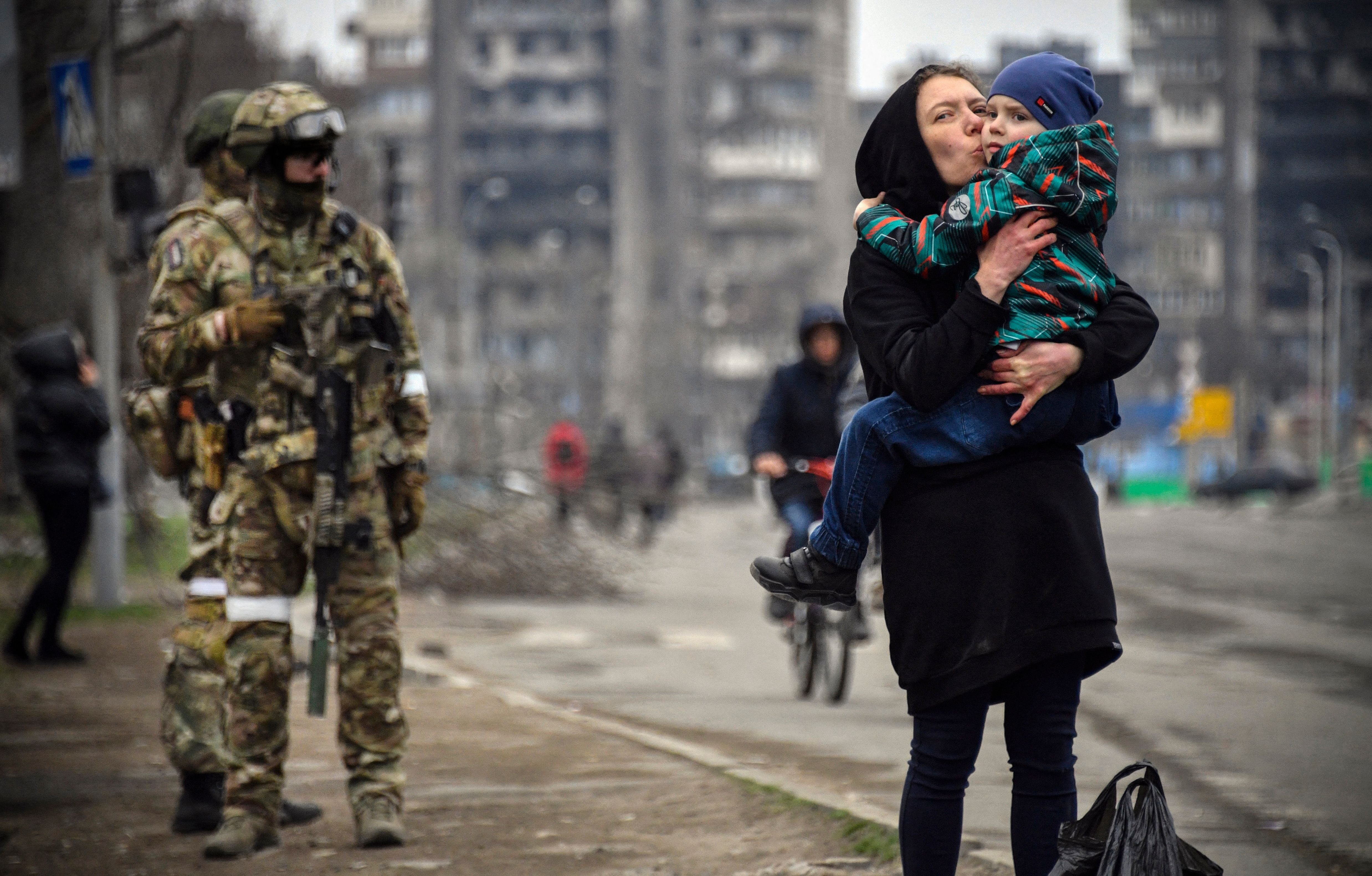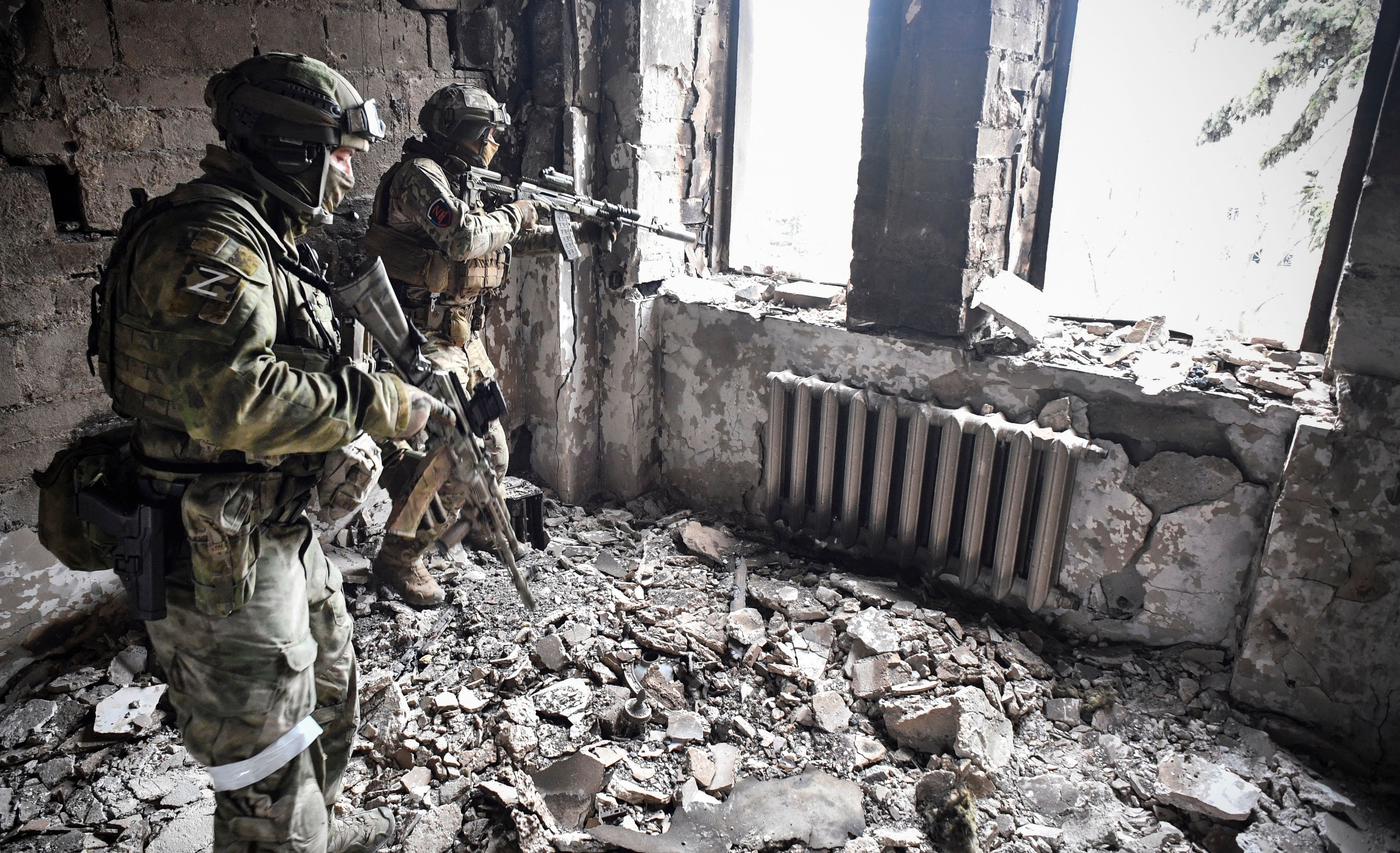Mariupol timeline: How the Ukrainian seaport became a city under siege
A coastal export hub, home to 400,000 people just two months ago, the city has borne the brunt of Russian brutality as Moscow seeks land bridge between Crimea and Donbas
Your support helps us to tell the story
From reproductive rights to climate change to Big Tech, The Independent is on the ground when the story is developing. Whether it's investigating the financials of Elon Musk's pro-Trump PAC or producing our latest documentary, 'The A Word', which shines a light on the American women fighting for reproductive rights, we know how important it is to parse out the facts from the messaging.
At such a critical moment in US history, we need reporters on the ground. Your donation allows us to keep sending journalists to speak to both sides of the story.
The Independent is trusted by Americans across the entire political spectrum. And unlike many other quality news outlets, we choose not to lock Americans out of our reporting and analysis with paywalls. We believe quality journalism should be available to everyone, paid for by those who can afford it.
Your support makes all the difference.Russian president Vladimir Putin has ordered his invading forces not to storm the last remaining Ukrainian stronghold in the besieged southern city of Mariupol, instead instructing troops to block the port “so that not even a fly comes through”.
His defence minister, Sergei Shoigu, said the rest of the city had been “liberated” and that the sprawling Azovstal Iron and Steel Works, a four square mile labyrinth of tunnels and bunkers, remained “securely blocked”.
By Russian estimates, a few thousand members of the Ukrainian defence forces who have so valiantly fought for the city for almost two months are now holed up inside and facing a last stand, with little prospect of escape.
Earlier this week, as the plant faced a heavy campaign of Russian bombing, a Ukrainian identifying himself as officer Serhiy Volynsky of the 36th Marine Brigade posted an unverified video message on Facebook calling on world leaders for help in which he said: “We have more than 500 wounded soldiers and hundreds of civilians with us, including women and children. This may be our last appeal. We may have only a few days or hours left.”
Ukrainian president Volodymyr Zelensky has said he believes approximately 1,000 civilians are trapped inside with the remaining soldiers.
Russia has repeatedly issued ultimatums to the defenders of Mariupol to surrender and been consistently ignored.
The city, an important export hub on the Sea of Azov in Ukraine’s industrial heartland, the Donbas, is viewed as an vital strategic target by Moscow, its capture enabling Russia to form a land bridge between Crimea – annexed by Mr Putin in 2014 – and the breakaway regions of Donetsk and Luhansk, where Russia-backed separatists have been at war with the Ukrainian military for eight years.
A steady campaign of Russian shelling since Mr Putin declared his “special military operation” to “demilitarise and de-Nazify” Ukraine on 24 February has reduced Mariupol, which had a pre-war population of 400,000, to a smouldering ruin.
An estimated 20,000 people have been killed in the fighting while those civilians still trapped there endure hellish conditions and live in constant fear for their lives as the world watches on in horror.
Four busloads of civilians reportedly managed to escape the city this week, with deputy prime minister Iryna Vereshchuk saying further evacuation efforts would be attempted.
From the Russian point of view, Mariupol’s definitive capture would represent a much-need publicity coup for Mr Putin, who has presided over a disastrous war so far, his troops ill-equipped and apparently unprepared for the heroic fightback mounted by the Ukrainians, who have won the admiration of the entire international community.

But leaving the Azovstal plant in Ukrainian hands would deny Mr Putin that win, a problem given that he is under particular pressure to demonstrate significant successes ahead of Russia’s annual 9 May “Victory Day” celebrations, hence his military’s renewed focus on the Donbas in recent days.
Here is a timeline of Mariupol’s brutal ordeal since the war began.
24 February - Mr Putin announces his invasion live on television. Ukrainian officials soon report that Russian troops have landed in Mariupol and Odesa and launched cruise and ballistic missile attacks on airfields, military headquarters and weapons depots in major cities like Kyiv, Kharkiv and Dnipro.
26 February - Russian forces first threaten to encircle Mariupol.
27 February - Siege warfare commences in earnest.
28 February - As the world implores the Kremlin to end the violence, a new diplomatic crisis erupts between Russia and Greece when the former’s air force bombs the settlements of Buhas and Sartana near Mariupol, majority-populated by Ukrainian Greeks, in which 12 Greeks are killed.
2 March - Mariupol’s mayor, Vadym Boychenko, reports that the Russian military is “relentlessly” targeting the city’s residential districts with shells and has already killed “scores” of civilians.

5 March - Russian armed forces announce first ceasefire to enable humanitarian corridors to be opened for the evacuation of around 200,000 civilians, now deprived of all water and electricity. The temporary halt to hostilities soon breaks down, however, with each side blaming the other for the collapse.
6 March - A second attempt to evacuate civilians from Mariupol is attempted but again ends in failure.
8 March - A third evacuation attempt is also botched, prompting accusations from Ukraine that Russia’s forces are in fact targeting the exit route.
14 March - The first successful evacuation of civilians from the embattled city is finally realised.
15 March - Ukrainian interior ministry adviser Anton Gerashchenko claims on Telegram that Russian major general Oleg Mityaev, 46, has been killed in Mariupol. Russia declines to confirm his death.
16 March - The city’s regional drama theatre, sheltering around 1,000 civilians, is bombed. In two locations outside the venue, the Russian word for “children” was spelled out in the hope of discouraging the bombing of a civilian air raid shelter. The story prompts fresh outcry around the world at the ruthlessness of Russia’s tactics.
19 March - Undeterred, Russian forces bomb an art school in Mariupol where another 400 people are taking shelter.

21 March - Ukraine rejects Russia’s call to surrender the city.
27 March - Mariupol is again subjected to sustained shelling as the Russian military carries out missile strikes across Ukraine, targeting the cities of Lutsk, Kharkiv, Zhytomyr and Rivne.
28 March - Heavy fighting continues in the city centre, which Ukraine’s foreign ministry says has now been reduced to “dust” as officials accuse the enemy of forcibly deporting local civilians, including children, to Russia. Mayor Boychenko calls for a complete evacuation of the remaining population.
30 March - Ukrainian officials report heavy shelling in Chernihiv as well as in the Ukrainian-controlled areas of the Donbas, including Mariupol, Marinka, Krasnohorivka, Avdiivka and Lysychansk.
31 March - The International Committee of the Red Cross reports that a humanitarian convoy is en route to deliver aid supplies to Mariupol and support evacuations. Deputy PM Vereshchuk later says that 12 aid trucks were able to deliver supplies but that they were subsequently seized by Russian troops.
3 April - Lithuanian film director Mantas Kvedaravicius is shot and killed in Mariupol while trying to escape, according to the Ukrainian defence ministry.
12 April - Controversial Ukrainian unit the Azov Regiment, whose soldiers are veterans of the ongoing war in the Donbas and again engaged in the defence of Mariupol, claims on Telegram that Russian forces have dropped “a poisonous substance of unknown origin” from an unmanned drone onto the Ukrainian military and civilians.

13 April - Russia’s defence ministry claims that 1,026 soldiers from Ukraine’s 36th Marine Brigade, including 162 officers, have surrendered. Ukraine says it has no information on the claim but Azov commander Denys Prokopenko later acknowledges that some Mariupol forces have surrendered.
14 April - Vadym Denysenko, an adviser to Ukraine’s interior minister, denies Russia’s surrender claim, telling a TV station: “The battle over the seaport is still ongoing today.”
15 April - The Russian defence ministry claims the city’s Ilyich Steel and Iron Plant has been “liberated” from the Ukrainian military.
16 April - Russia claims control of the city.
17 April - Fighting erupts in Mariupol’s Primorsky district, disproving Russian claims that the Ukrainian resistance has been entirely contained within the Azovstal steel plant.
19 April - The Russian defence ministry declares another ceasefire to allow for the evacuation of civilians from the plant, saying it is providing three convoys, each consisting of 30 cars and buses and 10 ambulances. However, Mariupol municipal adviser Petro Andryushenko warns that the corridor is likely to be a trap.
20 April - Ukraine accuses Russia of bombing a hospital sheltering 300 people in Mariupol.
21 April - Mr Putin orders his men not to storm the Azovstal plant as the brave fight for the defence of Mariupol finally looks lost.
The Independent has a proud history of campaigning for the rights of the most vulnerable, and we first ran our Refugees Welcome campaign during the war in Syria in 2015. Now, as we renew our campaign and launch this petition in the wake of the unfolding Ukrainian crisis, we are calling on the government to go further and faster to ensure help is delivered. To find out more about our Refugees Welcome campaign, click here. To sign the petition click here. If you would like to donate then please click here for our GoFundMe page.




Join our commenting forum
Join thought-provoking conversations, follow other Independent readers and see their replies
Comments